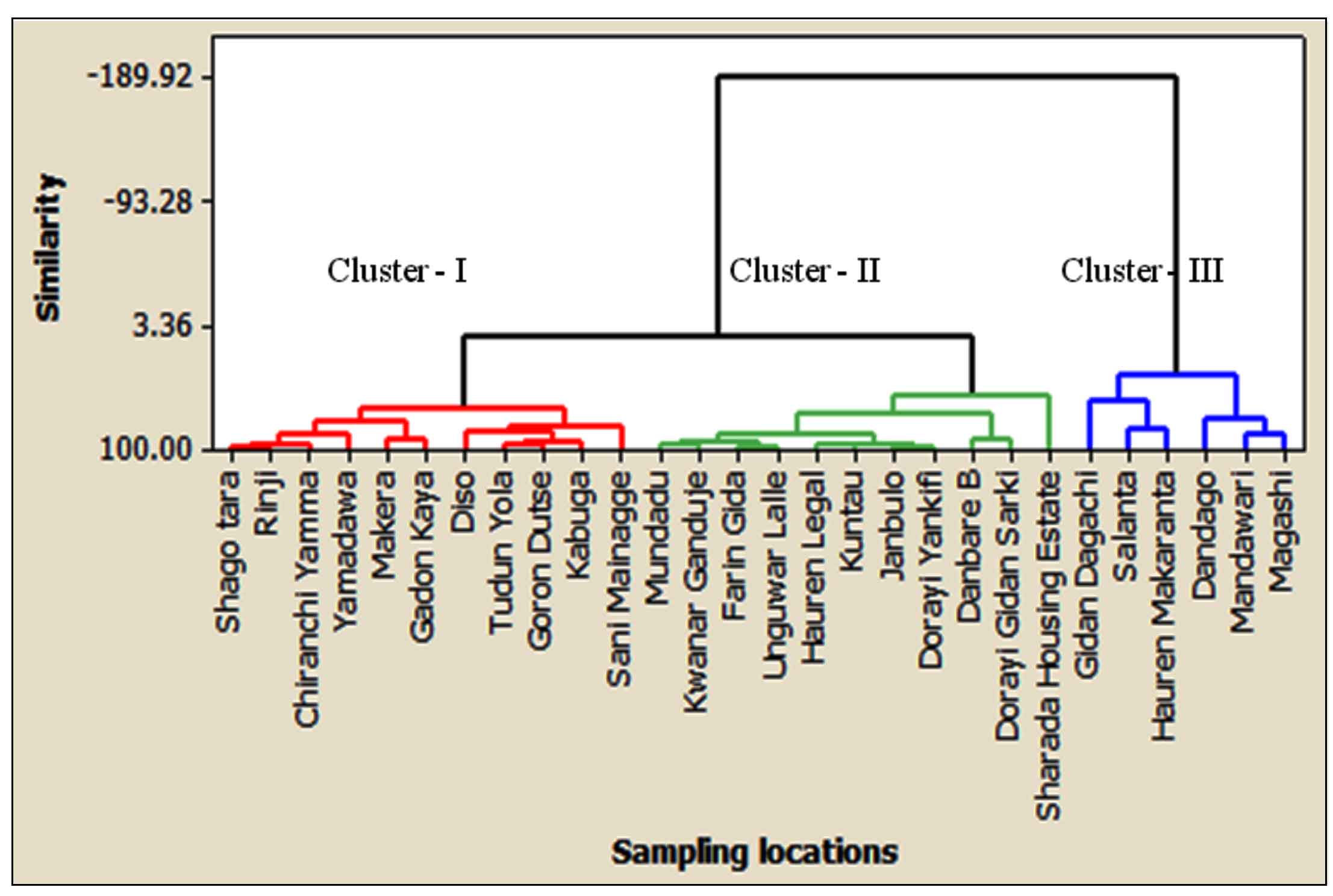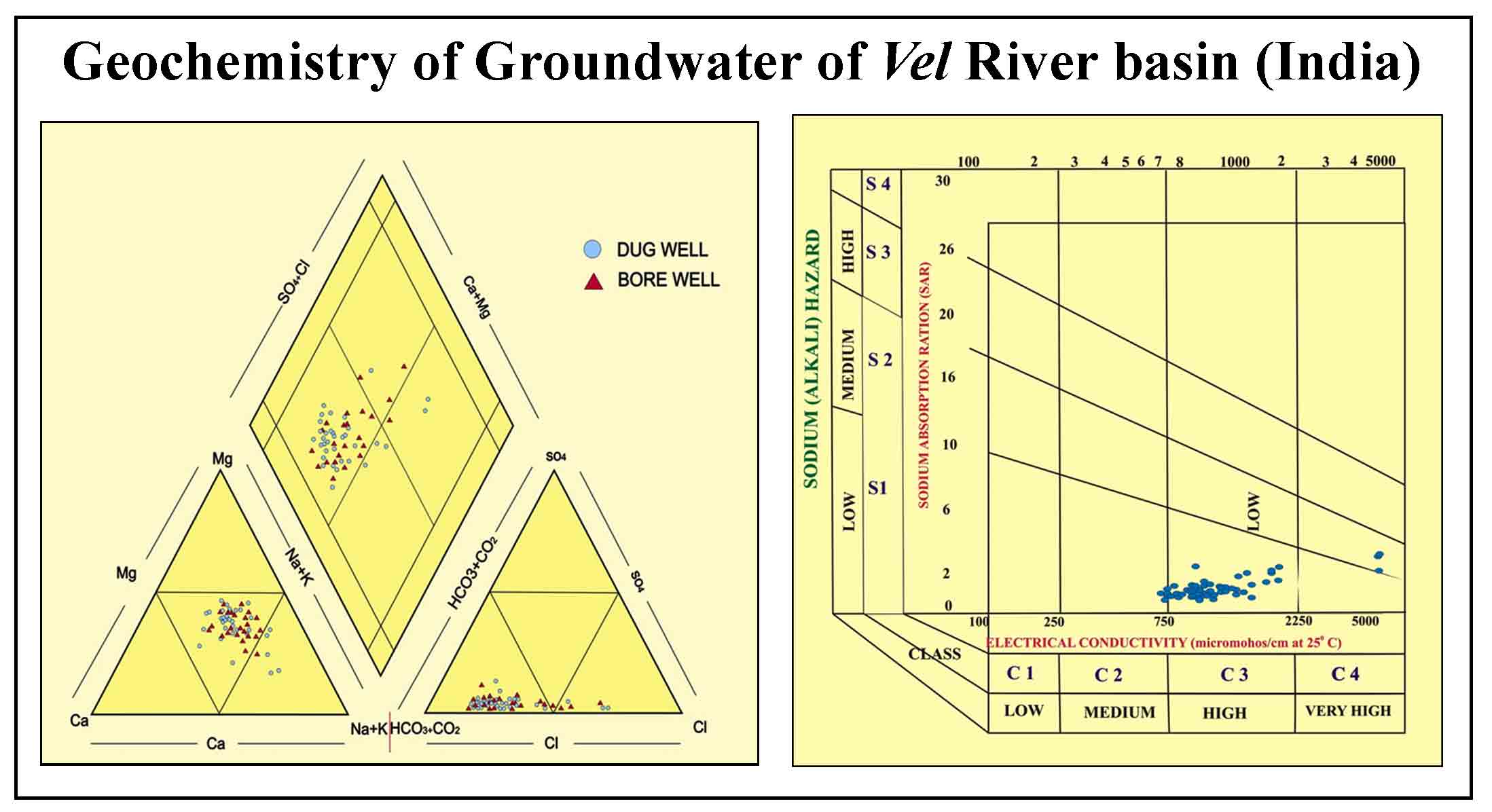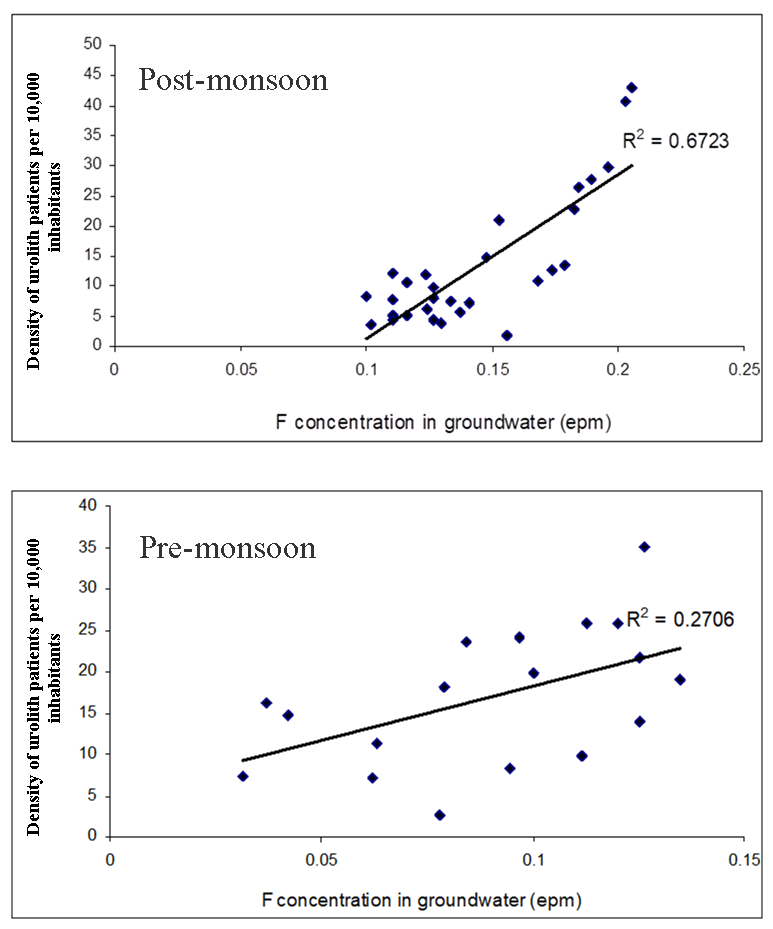Article Title :
Statistical Explanatory Assessment of Groundwater Quality in Gwale LGA, Kano State, Northwest Nigeria
4 (2020)
1-13
Physicochemical Parameters , Groundwater , Correlation Analysis , Cluster Analysis , Chemical Concentrations


Groundwater is one of the significant sources of drinking water in the world. To protect groundwater quality for domestic consumption, it is important to undertake a periodic investigation of its quality to improve the healthy living of the ever-increasing population. In this paper, we have analyzed physical and chemical (physicochemical) concentration levels in groundwater samples collected from twenty-eight sampling locations during the raining season in Gwale, Northwest Nigeria. About fifteen physicochemical parameters such as electric conductivity (EC), turbidity (Turb), pH, temperature (Temp), nitrate (NO3), phosphate (PO4), total dissolved solid (TDS), chloride (Cl), sulphate (SO4), calcium (Ca), magnesium (mg), sodium (Na), total hardness (TH), iron (Fe) and alkalinity (Alk) were analyzed. The concentrations levels of groundwater parameters in each sampling location were compared with the permissible limits of drinking water qualities specified by the Nigerian Industrial Standard (NIS) to determine the suitability of drinking water in the study area. Karl Pearson’s coefficient of correlation was applied to the groundwater dataset to identify the influence of each physicochemical parameter to the groundwater contamination. Also, hierarchical cluster analysis was used to classify the groundwater samples based on contamination density as well as to identify the sources of water contamination. The results from correlation analysis revealed that EC, TDS, Ca, TH, Mg, SO4, Na and Cl were influenced the water contamination in many of the study locations based on the conventional significance levels (1% and 5%). From the results of cluster analysis, three statistically significant groups (cluster 1, cluster 2 and cluster 3) were formed which were defined as lower contaminated areas, moderately contaminated areas and higher contaminated areas, respectively. The contamination levels identified in the three clusters were attributed to anthropogenic and industrial activities in the raining season. Therefore, groundwater from cluster 3 (Salanta, Hauren makaranta, Dandago, Mandawari and Magashi) are found unsuitable for drinking. This study is useful in monitoring groundwater quality and could be applied in any other location.

The groundwater quality of Gwale Area was compared with the permissible limits specified by the NIS.
EC, TDS, Ca, TH, Mg, SO4 and Cl were influenced by anthropogenic and industrial activities.
Correlation analysis was applied to identify the influence of each water parameter.
Cluster analysis was used to classify the groundwater samples based on sources of contamination.
The groundwater samples of cluster-III were highly contaminated and found unsuitable for drinking.
Arabi, A.S., Funtua, I.I, Dewu, B.B.M., Garba, M.L., Okoh, S., Kwaya, M.Y. and Bolori, M.T., 2013. Assessment of calcium and magnesium concentrations in groundwater as supplements for sleep related ailments. J. Appl. Environ. Biol. Sci., 3(7), 29-35.
Aremu, M.O., Olaofe, O., Ikokoh, P.P. and Yakubu, M.M., 2011. Physicochemical characteristics of stream, well and borehole water sources in Eggon, Nasarawa State, Nigeria. J Chem Soc Niger, 36(1), 131-136.
Dan’azumi, S. and Bichi, M.H., 2010. Industrial pollution and heavy metals profile of Challawa River in Kano, Nig. J. Appl. Sci. Envt. Sanitation, 5(1), 23-29.
EPA [Environmental Protection Agency], 2001. Parameters of water quality-interpretation and standards. Environmental Protection Agency, Ireland.
Gorde, S. P. and Jadhav, M. V., 2013. Assessment of water quality parameters: A review. J Eng Res Appl, 3(6), 2029-2035.
Janina, M., 2012. Detecting and estimating trends of water quality parameters. Dr. Voudouris (Ed.), Water Quality Monitoring and Assessment, InTech.
Liya, F. and You-Gan, W., 2012. Statistical tools for analyzing water quality data. Dr. Voudouris (Ed.), Water Quality Monitoring and Assessment, InTech.
McKenna, J. E., 2003. An Enhanced cluster analysis program with bootstrap significance testing for ecological community analysis. Environ Model Softw 18(3), 205-220.
Mkadmi, Y., Benabbi, O., Fekhaoui, M., Benakkam, R., Bjijou, W., Elazzouzi, M., Kadourri, M. and Chetouani, A., 2018. Study of the impact of heavy metals and physico-chemical parameters on the quality of the wells and waters of the Holcim area (Oriental region of Morocco). J Mater Environ Sci, 9(2), 672-679.
Mukate, S. V., Panaskar, D. B., Wagh, V. M., and Baker, S. J., 2020. Understanding the influence of industrial and agricultural land uses on groundwater quality in semiarid region of Solapur, India. Environment, Development and Sustainability: A Multidisciplinary Approach to the Theory and Practice of Sustainable Development, Springer, 22 (4), 3207-3238.
NIS [Nigerian Industrial Standard], 2015. Nigerian standard for drinking water quality. NIS-554.
Raviprakash, S. L. and Krishna, R. G., 1989. The chemistry of groundwater Paravada area with regard to their suitability for domestic and irrigation purpose. India J Geochem, 4(1), 39-54.
Tirkey, P., Tanushree, B. and Sukalyan, C., 2013. Water quality indices– Important tools for water quality assessment: a review. International Journal of Advances in Chemistry, 1(1).





